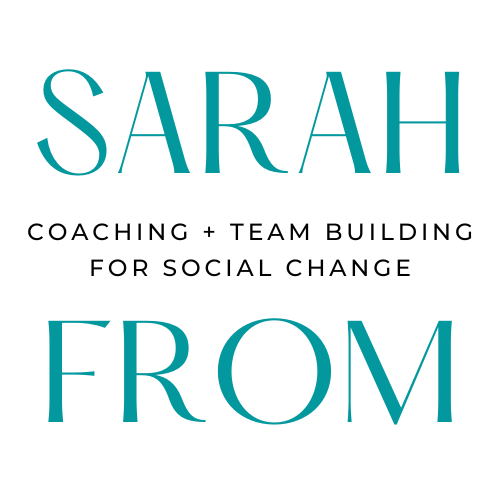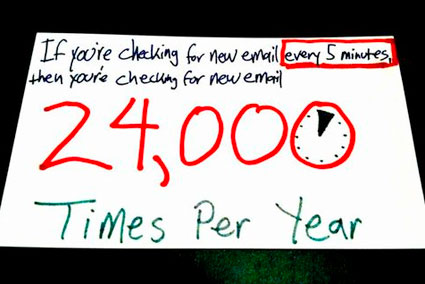
This time last December, I was working in an office crammed with stuff. Conference programs, old speeches, copies of travel receipts, notebooks brimming with ideas from half a decade ago, and drafts of reports long-ago published were filed and piled around me. I wasn’t a hoarder – I just considered stacking things to be a valid organizing system.
Since I was generally able to find what I needed when I needed it, I didn't consider myself disorganized. Psychologically, my stacks served as a symbol of the important work that I was doing – work so important that it kept piling up and didn’t wait for me to get around to filing it.
At the same time, I knew my stacks weren’t really doing me any favors. They took up valuable real estate on my desk, limiting my ability to spread out when I needed to do “big thinking” on projects. Occasionally I would fail to do something or be somewhere because the information I needed was buried and forgotten in a stack. I would sort through my stacks, filing and shredding from time to time, but the stacks never went away. They were weighing me down.
Enter David Allen’s Getting Things Done (GTD) system, recommended to me by a number of trusted colleagues. GTD is a system for collecting, processing, organizing, reviewing, and doing all of the “stuff” that comes into our lives. Though there are many different products & commentaries on GTD, the place to start is David Allen’s book, which is a cheap and quick read.
I embarked on the first stage of GTD during the week between Christmas and New Year’s. For five days, I went through every piece of paper, every receipt and takeout menu. Armed with a label-maker, a stack of fresh file folders, and an inbox, I followed David Allen’s instructions and began to bring order to my office. By the first week of 2009, I was back to work with an organized workspace and a new system in place.
My desk and my mind clear of clutter, I was able to clarify my priorities and take care of first things first. Trusting that every email, meeting request, or task I agreed to do would be captured and processed in my system, I was able to shed the nagging feeling that something was falling through the cracks. My follow-through on the commitments I made radically improved, and I developed peace of mind that I was doing what I should be doing at any given moment.
This summer, as I prepared to shift from full-time office worker to full-time student and part-time consultant, I brought GTD more fully into my home. I set up a home office and have maintained a zero-tolerance policy on stacks of papers. The only place that papers are allowed to pile up is in my inbox (which gets regularly emptied), meaning that on more days than not, my desk actually looks like the picture above.
I now allow myself the time to do the regular maintenance that I need to keep my work, and my life, moving in the direction I want to be going. When I wasn’t giving regular attention to all of the things that needed attending to, stuff quite literally stacked up. I used to feel that I couldn’t afford to spend time “organizing” – work and life moved too fast. Now I realize that I can’t afford not to.
This is not to say that life feels totally under control and my time spent is always aligned with my priorities – far from it. But GTD has helped me develop a “new normal” for myself. And this calm, organized normal feels a lot better than the overwhelming stacks of unaddressed stuff I was living with before.
 How many steps do you take a day? Inspired by a recommendation by Dr. Oz, I bought a $23 pedometer and have started tracking my steps. Dr. Oz recommends taking 10,000 steps a day as a good aim for a healthy, active lifestyle.
Yesterday I just hit 10,000 by doing a day's worth of errands, laundry, and housecleaning. I know not every day is so active for me -- many much less so. My goal is to hit 10,000 steps a day, 4 days a week for the next month.
How many steps do you take a day? Inspired by a recommendation by Dr. Oz, I bought a $23 pedometer and have started tracking my steps. Dr. Oz recommends taking 10,000 steps a day as a good aim for a healthy, active lifestyle.
Yesterday I just hit 10,000 by doing a day's worth of errands, laundry, and housecleaning. I know not every day is so active for me -- many much less so. My goal is to hit 10,000 steps a day, 4 days a week for the next month.



